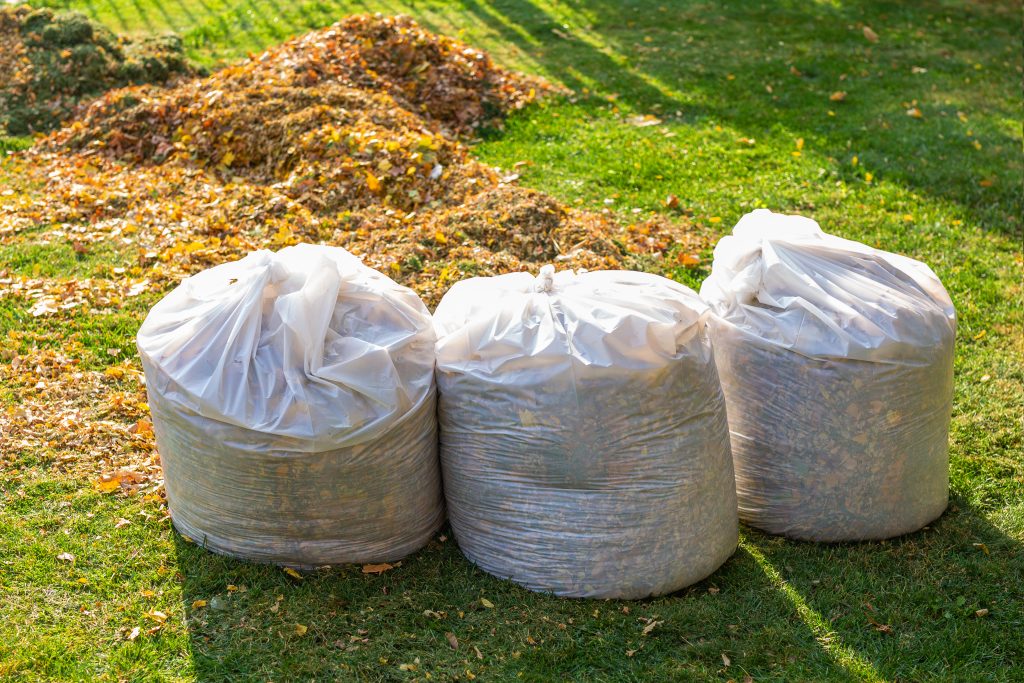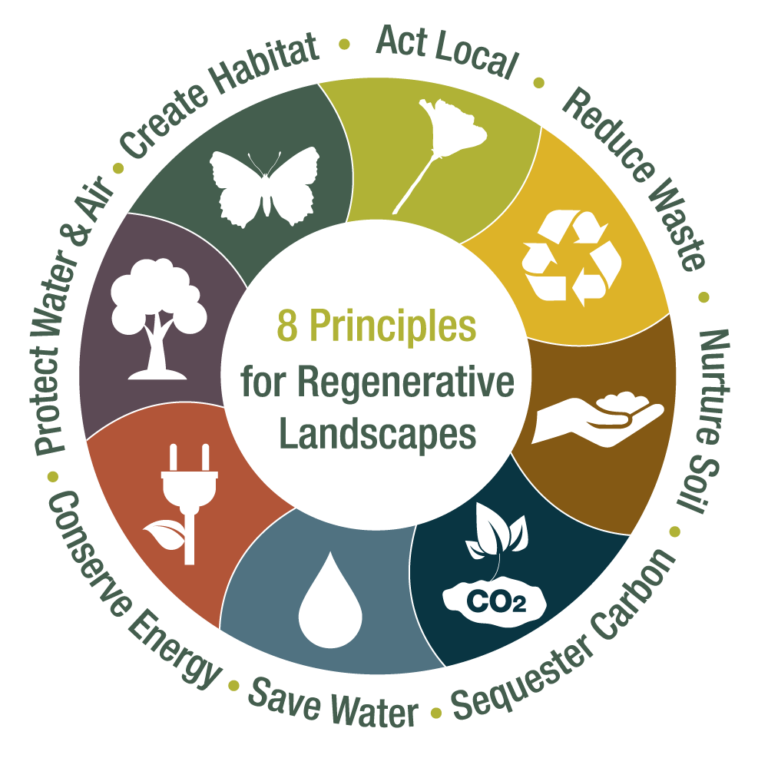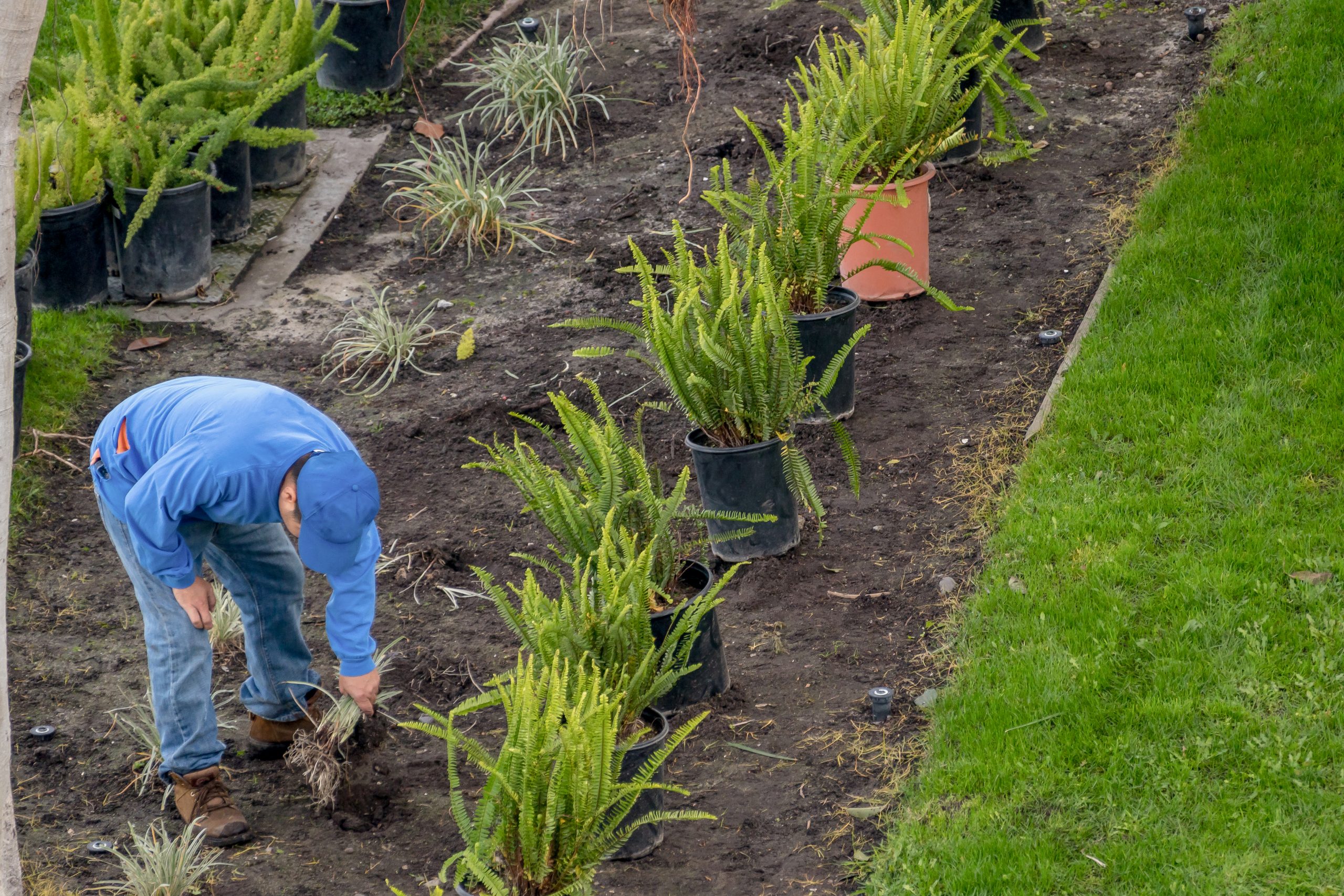When it rains, yard waste, sediments, and toxic lawn and garden chemicals sometimes used in commercial landscape maintenance can make their way into the San Mateo County storm drain system before reaching local creeks, the Bay, and the Ocean. These wastes and chemicals can contaminate local waterways, making them unsafe for people and wildlife.
Best Practices
Follow these best practices to prevent pollution, protect public health, and avoid fines or other enforcement action.
Fertilizers, Herbicides & Pesticides: Fertilizers, herbicides, and pesticides are often carried into the storm drain system by sprinkler runoff. Use natural, less toxic alternatives to traditional garden chemicals. If you must use chemical fertilizers, herbicides, or pesticides, spot apply rather than blanketing entire areas, avoid applying near curbs and driveways, and never apply before it rains. Get more information here.
Hazardous Waste Disposal: Pesticides, fertilizers, herbicides, and motor oil contaminate landfills and should be disposed of through a Hazardous Waste Hauler or Facility. Click here to learn more about the Very Small Quantity Generator (VSQG) Program.
Planting: Plant native vegetation to reduce the need of water, fertilizers, herbicides, and pesticides.
Preventing Erosion: Erosion washes sediments, debris, and toxic runoff into the storm drain system, polluting waterways. Prevent erosion and sediment runoff by using ground cover, berms, and vegetation down-slope to capture runoff. Avoid excavation or grading during wet weather.
Store Materials Safely: Keep landscaping materials and debris away from the street, gutter, and storm drains. On-site stockpiles of materials should be covered with plastic sheeting to protect from rain, wind, and runoff.

Water Usage: Conserve water and prevent runoff by controlling the amount of water and direction of sprinklers. Sprinklers should be on long enough to allow water to soak into the ground but not so long as to cause runoff. Periodically inspect, fix leaks, and realign sprinkler heads.
Yard Waste Recycling: Recycle leaves, grass clippings, and other yard waste. Do not blow, sweep, rake, or hose yard waste into the street. Let your customers know about grass cycling—the natural recycling of grass by leaving clippings on the lawn when mowing instead of using a grass catcher. Grass clippings will quickly decompose, returning valuable nutrients to the soil. You can get more information at CalRecycle.
Regenerative Landscaping (previously Bay-Friendly Landscaping): ReScape California is a non-profit organization dedicated to a whole systems approach to the design and maintenance of landscaping in California. Based on eight principles of regenerative landscapes, ReScape offers guidance and resources as well as certification programs to become qualified in regenerative landscape design and maintenance.

ReScape certified landscape professionals can create and maintain healthy, beautiful, and vibrant landscapes using these eight principles:
- Act Local
- Reduce Waste
- Nurture Soil
- Sequester Carbon
- Save Water
- Conserve Energy
- Protect Water & Air
- Create Habitat
Green Infrastructure Design Guide
Very Small Quantity Generator (VSQG) Program
Some businesses generate very little hazardous waste and may be eligible to participate in the Very Small Quantity Generator (VSQG) Program. The Program is designed to provide an inexpensive hazardous waste disposal option to these companies, non-profits, and other entities instead of contracting with a commercial hazardous waste management firm.
The Program operates by appointment only. Click here to learn more.
Additional Resources
- Bay-Friendly Landscaping Guidelines
- ReScape California
- Streamside Planting Guide
- Alternatives For Invasive Garden Plants
- The Sustainable Sites Initiative
- Steps to Becoming EcoWise Certified in IPM Service
- Less Toxic Pest Control Service
Contact Information
- Stormwater Business Inspectors: Municipal Stormwater Inspectors visit commercial and industrial businesses to help them understand and comply with stormwater pollution control requirements.
- Sanitary Sewer Treatment Authorities: All discharges to sanitary sewer must be approved by your local sanitary sewer treatment authority.
- Local Hazardous Waste Regulator: The San Mateo County Environmental Health Division is the Certified Unified Program Agency (CUPA) for all areas of San Mateo County and can be reached at: (650) 372-6200.
